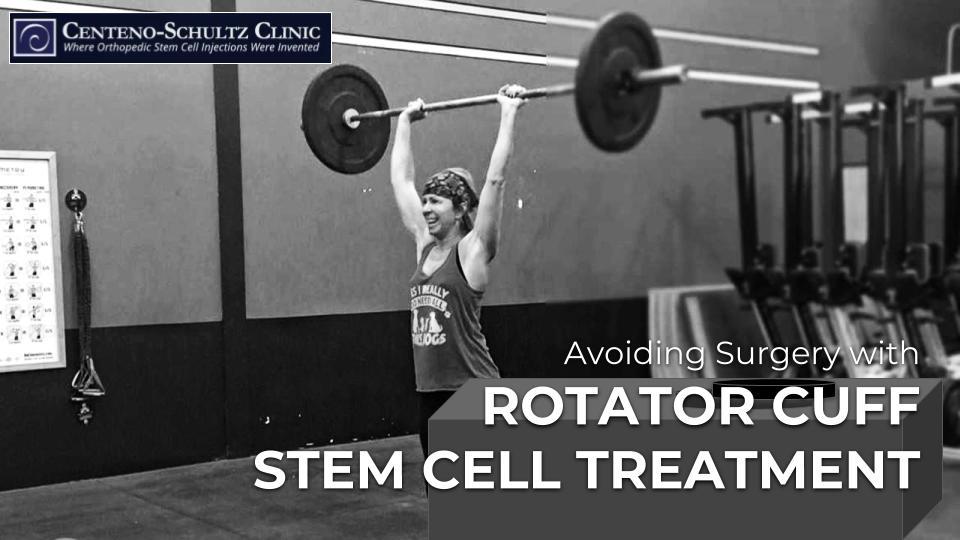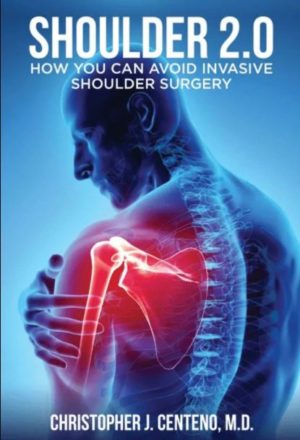We’ve been performing stem cell injections in the shoulder longer than anyone else in the United States. Several years ago, Ann, a CrossFit enthusiast, tore her rotator cuff in her shoulder and was recommended for surgery. She wisely decided to research non-surgical alternatives for shoulder pain and made her way to our clinic. It’s been a few years since her stem cell treatment, but today we want to share her story. First, let’s take a look at the rotator cuff and a few of the problems with rotator cuff surgery.
Is Rotator Cuff Surgery a Good Idea?
The rotator cuff is a complex of tendons and muscles that live in the shoulder. Its primary function is to stabilize and support the shoulder. If the rotator cuff becomes overloaded, for example while lifting too much weight overhead, the rotator cuff can tear; however, tears can also occur from the normal wear and tear on the body that happens with aging.
Many times, when patients with shoulder pain hear their MRI has shown a rotator cuff tear, their first thought is that they need to get it repaired right away, but tears can exist with or without shoulder pain, so automatically diagnosing the tear as the cause of the pain and then performing rotator cuff surgery to “fix” it is a bad idea. Let’s take a look at a small handful of the many studies that not only support this but that also reveal why rotator cuff surgery, in many cases, is not a good idea:
- Those with shoulder arthritis have higher rates of rotator cuff retears after a rotator cuff surgery; rotator cuff surgery has also been linked to the new development of shoulder arthritis after surgery.
- Rotator cuff surgery on pro athletes results in only about half actually being able to return to their same physical level in the game.
- Rotator cuff surgery for a tear has been shown to be no better than physical therapy in a massive meta-analysis of randomized controlled trials.
Our CrossFit enthusiast decided against the surgical risks and opted for rotator cuff stem cell treatment instead…
Ann’s Rotator Cuff Story
In 2012, after running a race the day before, Ann woke up one night with an aching right shoulder. A steroid shot given by her doctor provided no relied, and a complete rotator cuff tear was discovered on MRI. She underwent a few sessions of the active release technique. This helped some with her activities of daily living, such as putting on her shirt and so on, but it didn’t relieve the pain. As is the natural progression in traditional orthopedics, her doctor recommended surgery, but Ann was determined to find a nonsurgical solution and made her way to our clinic. In 2014, Ann received a rotator cuff stem cell treatment using precise image guided injections of her own stem cells and platelets. To learn more about this treatment for the rotator cuff, watch the brief video below:
So how did Ann do? Three years after her treatment, we received a thank-you note from her saying her CrossFit training was still going strong and she had no limitations in her shoulder (you can read it here).
More on Rotator Cuff Stem Cell Treatment
The two most common types of stem cells that are produced by the bone marrow are mesenchymal stem cells (MSCs) and hematopoietic stem cells (HSCs). MSCs can differentiate into tendon cells and can also coordinate a repair response. HSCs can help repair muscle. So utilizing a one-two punch of these cells to treat the tendons and muscles may help a damaged rotator cuff heal.
We see a lot of CrossFit athletes, many for rotator cuff tears, as most know that surgery will likely result in stopping their training in its tracks as recovery is often lengthy. And if they are able to return to their workouts after recovery, many find they just can’t get to the level they once achieved. It’s always a joy to get their feedback after a stem cell treatment for rotator cuff tears and see them back in the gym working out at full capacity and doing what they love!

